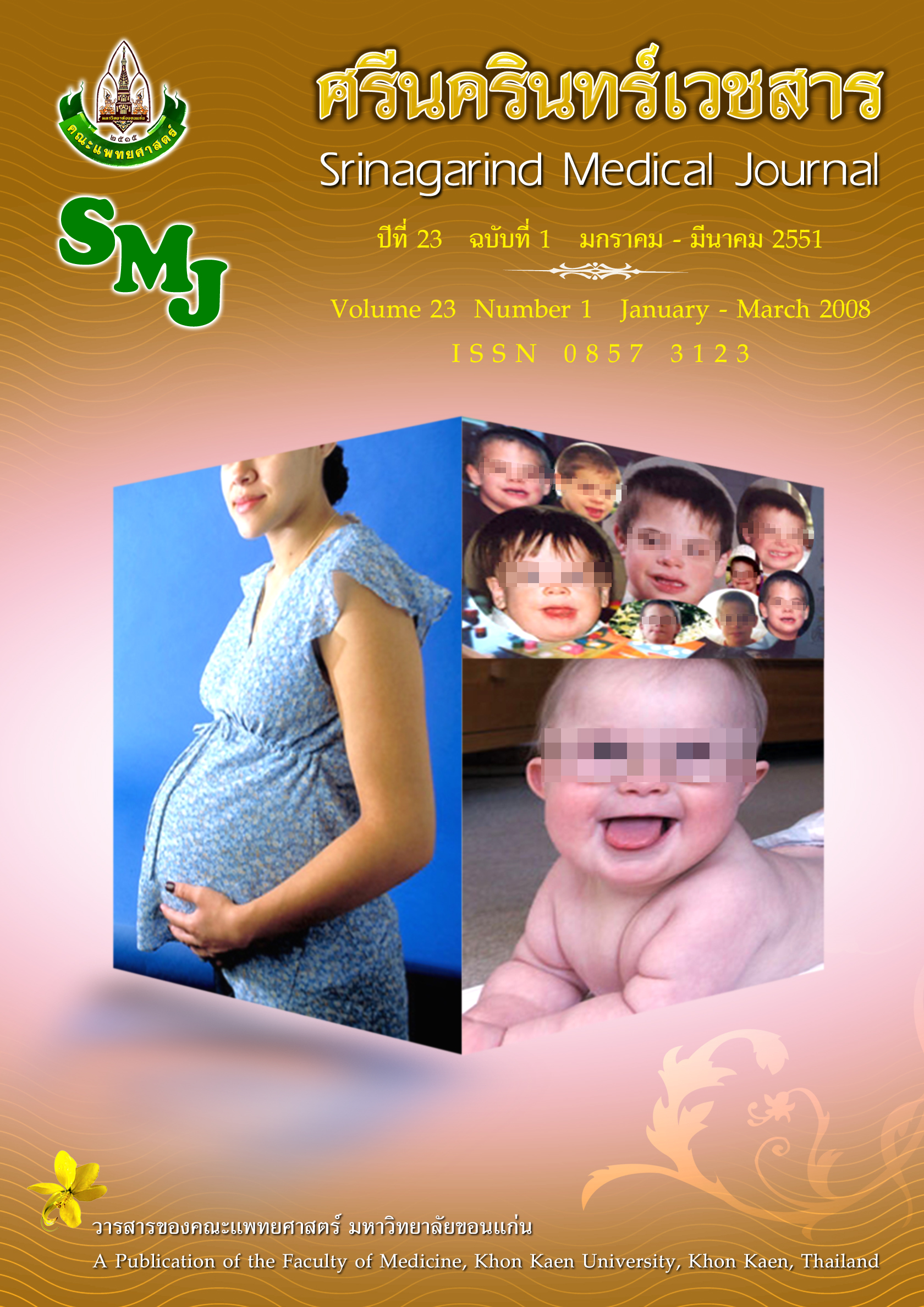Institutional Benchmarking: A Tool to Improve Quality of Acute Pain Service
บทคัดย่อ
Background: Currently, post-operative pain management is considered an integral part of recovering and reducing complications related to pain. Acute pain service (APS) has been established worldwide in order to improve the effectiveness of patient care. The Departments of Anesthesia at Khon Kaen and Chiang Mai Universities (KKU and CMU, respectively) developed an APS system each at approximately the same time. Collaboration of the two institutions to benchmark their APS data will help them move forward vis-à-vis post-operative pain management.
Objectives: Comparing the results of the respective APS systems between Khon Kaen and Chiang Mai Universities.
Design: Retrospective, descriptive study
Methods: The 2005 calendar year data, from the respective APS databases, were reviewed, allowing a comparison of post-operative pain management at KKU and CMU hospitals. We focused on the percentage of post-operative orthopedic patients care through the APS system compared with (1) APS service, (2) days of service, (3) method of pain management, (4) pain assessment, (5) complications, (6) the APS system and (7) patient satisfaction. The data were analyzed using descriptive statistics.
Results: Patients who received APS accounted for 12.3 and 7.2 percent of KKU and CMU patients, respectively. The greatest proportion of patients at KKU receiving APS was for intra-abdominal surgery (60%) while at CMU it was for cardiovascular and thoracic surgery (76%). Both institutions provided an average 2.0±1.0 days of service. Surgery on extremities (orthopedics) ranked second at both institutions (26.8 and 20.7 percent, respectively). KKU used variety techniques for controlling pain among orthopedic patients: viz., IV PCA (59%), IV opioid infusion (30%), epidural (6.8%) and spinal morphine with PCA (5.2%), while the primary modality for pain control at CMU was IV PCA (97%). Resting pain for CMU patients was less than that reported by KKU patients (6 vs. 9.5 percent, respectively); however, dynamic pain was not assessed at CMU. Serious complication was not found and patient rated satisfy with APS approximately 94% and 97% (CMU, KKU).
Conclusion: The delivery of APS for orthopedic surgery patients at two regional university hospitals in Thailand were studied and benchmarked. There was some difference in the strengths of the APS system between the two institutions; such as, techniques of pain treatment, pain scores and system for pain management. Strengths and weaknesses observed during this benchmarking exercise will be used to improve the delivery of APS at both institutions.
Keywords: Acute Pain Service; Benchmark; Post-Operative Pain; University Hospital




